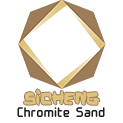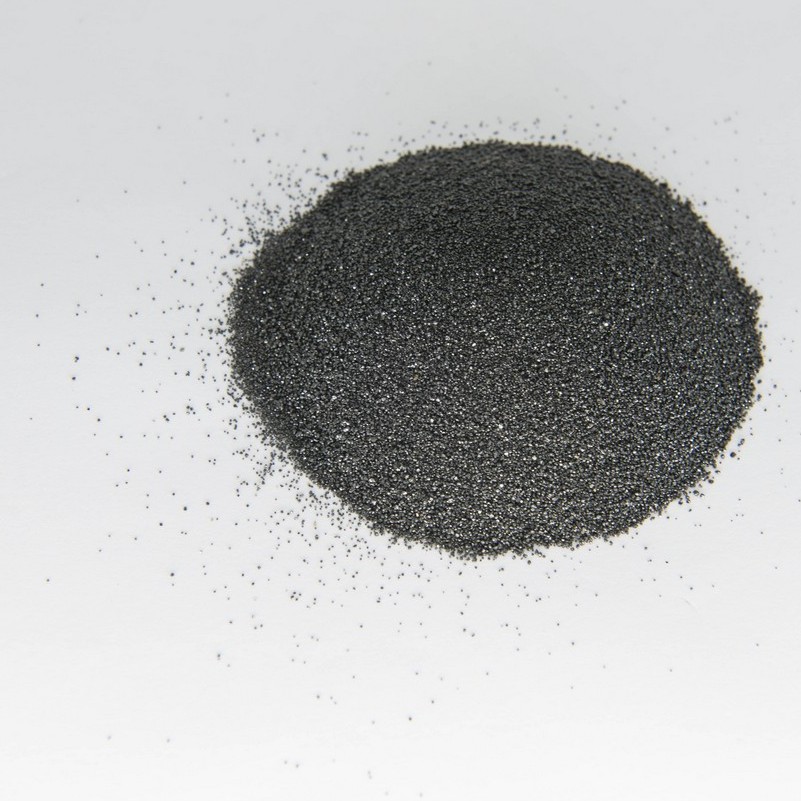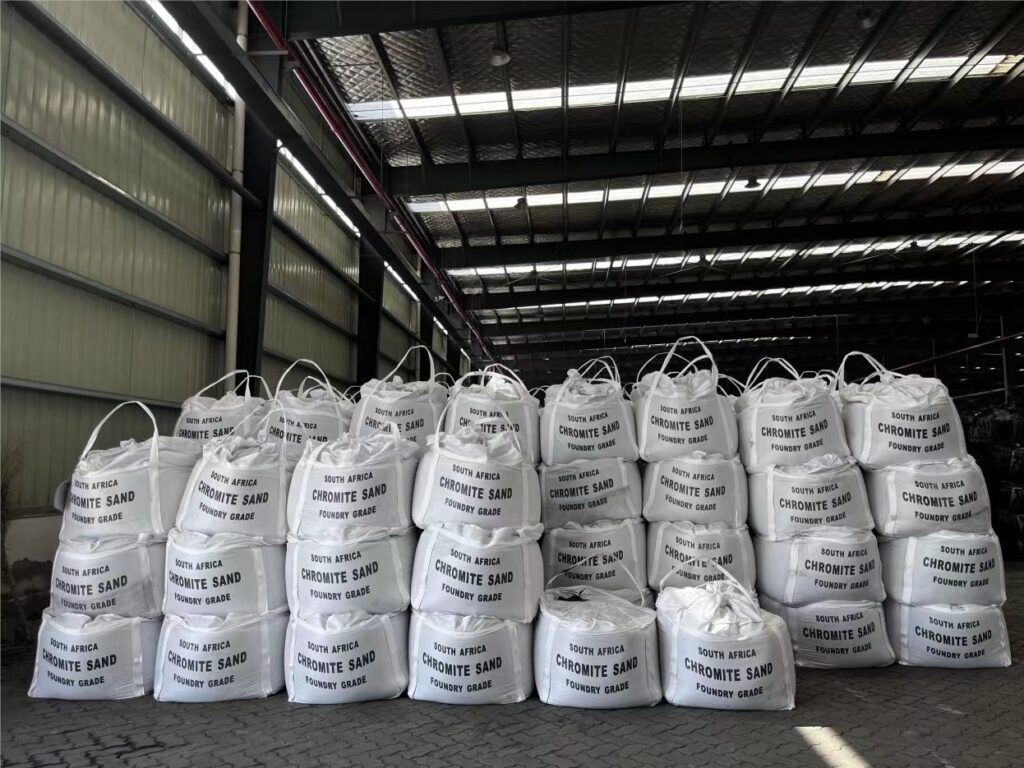Chromite sand is used in the metal casting industry due to its high thermal conductivity providing the chilling effect. Chromite has a low thermal expansion which helps eliminate expansion defects. Chromite sand has a glossy black appearance and has a greater resistance to metal penetration than zircon. It has a higher acid demand than other sands, which means you will need to use more significant amounts of acid catalyst when furan resin is used. Chromite is generally used for steel castings to provide chilling.
| PHYSICAL PROPERTIES(TYPICAL) | AVERAGE CHEMICAL COMPOSITION(TYPICAL) | ||
| PH | 7-9 | Cr2O3 | ≥46.0% |
| Color | Black | SiO2 | ≤1.0% |
| Acid Amount | ≤2m | Fe2O3 | ≤26.5% |
| Soil% | ≤0.1 | CaO | ≤0.30% |
| Bulk Density | 2.5-3.0g/cm3 | MgO | ≤10.0% |
| Specific Gravity | 4.0-4.8g/cm3 | Al2O3 | ≤15.5% |
| Moisture | ≤0.1% | P | ≤0.003% |
| Sintered temperature | ≥1800℃ | S | ≤0.003% |
| Free Acid | 0 | Cr/Fe | 1.55:1 |
| Filling density | 2.6g/cm3 | ||
| Melting temperature | ≥2180℃ | ||
PARTICLE SIZE DISTRIBUTION
| Sample No | MESH | AFS VALUE | |||||
| +40 | +50 | +70 | +100 | +140 | -140 | ||
| 1 | 6.1 | 36.8 | 41.2 | 9.5 | 5.2 | 12 | 50.68 |
| 2 | 7.2 | 37.3 | 40.6 | 10.4 | 3.9 | 0.6 | 49.40 |
| 3 | 6.9 | 38.1 | 39.9 | 11.0 | 3.7 | 0.4 | 49.22 |
| 4 | 7.0 | 38.4 | 40.0 | 8.9 | 4.6 | 1.1 | 49.83 |
| 5 | 10.3 | 37.9 | 38.8 | 8.6 | 3.5 | 0.9 | 48.23 |
| 6 | 9.4 | 38.1 | 37.2 | 10.4 | 3.6 | 1.3 | 49.36 |
| 7 | 8.1 | 38.4 | 39.2 | 9.7 | 3.2 | 1.4 | 49.34 |
| 8 | 8.6 | 37.9 | 38.6 | 8.4 | 3.9 | 2.6 | 50.46 |
| 9 | 9.8 | 36.7 | 40.2 | 9.0 | 3.3 | 1.0 | 48.72 |
| 10 | 9.2 | 37.1 | 38.9 | 8.2 | 5.0 | 1.6 | 50.03 |


